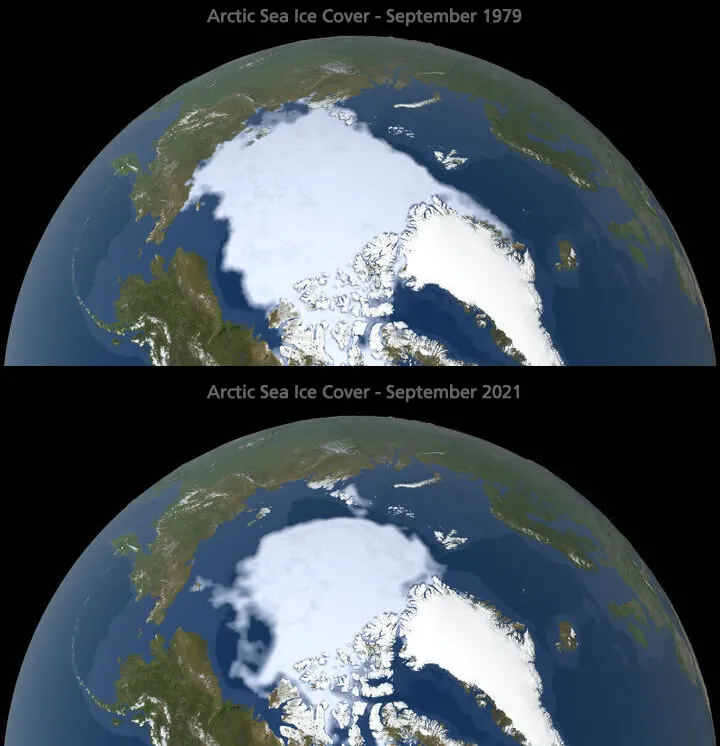Warming of the Polar Regions
The effects of climate change are not the same in all parts of the world. While global average temperature has risen 1°C (1.8°F) above the 1950-1980 average, our planet's polar regions are experiencing warming at a faster rate than other places.
Warming in the Arctic
The Arctic is warming twice as fast as other parts of the world. In less than half a century, from 1971 to 2019, the Arctic's average annual temperature rose by 3.1°C (5.6°F). The warmer temperatures are having impacts in the Arctic region. Sea ice is melting, frozen ground (called permafrost) is thawing, and habitat is shrinking for wildlife that rely on cold temperatures.

Arctic sea ice cover is shrinking at a rate of 13% per decade. Here is a satellite image of Arctic sea ice in 1979 (covering 6.90 million square kilometers) compared to Arctic sea ice in 2021 (covering 4.72 million square kilometers). As of 2021, the lowest sea ice values on record occurred in 2012, covering an area of only 3.39 million square kilometers.
NASA, https://climate.nasa.gov/vital-signs/arctic-sea-ice/
Warming in Antarctica
In the Southern Hemisphere, the Antarctic Peninsula is also experiencing rapid warming, about five times faster than the global average. Since 1950, the Antarctic Peninsula has warmed almost 3°C (5.4°F). The interior of the Antarctic continent and the East Antarctic Ice Sheet, considered unlikely to be affected by climate warming in the past, are also showing signs of change. The Southern Ocean is also warming faster than expected.
Why are the polar regions particularly vulnerable to climate warming?
The ice and snow in the polar regions, because of its light color and high albedo, typically reflect most of the incoming solar energy back out of our atmosphere. However, as more greenhouse gases cause our planet to warm, the rate of ice and snowmelt increases. This decreases the amount of solar radiation reflected out to space and increases the amount that is absorbed by the Earth’s surface and oceans. The added energy warms the polar regions, accelerating the rate of ice to melt and thus causing more warming.
As the polar regions warm, the land, ice, ocean, and living things are affected.
© 2022 UCAR with portions adapted from Windows to the Universe (© 2008 NESTA)